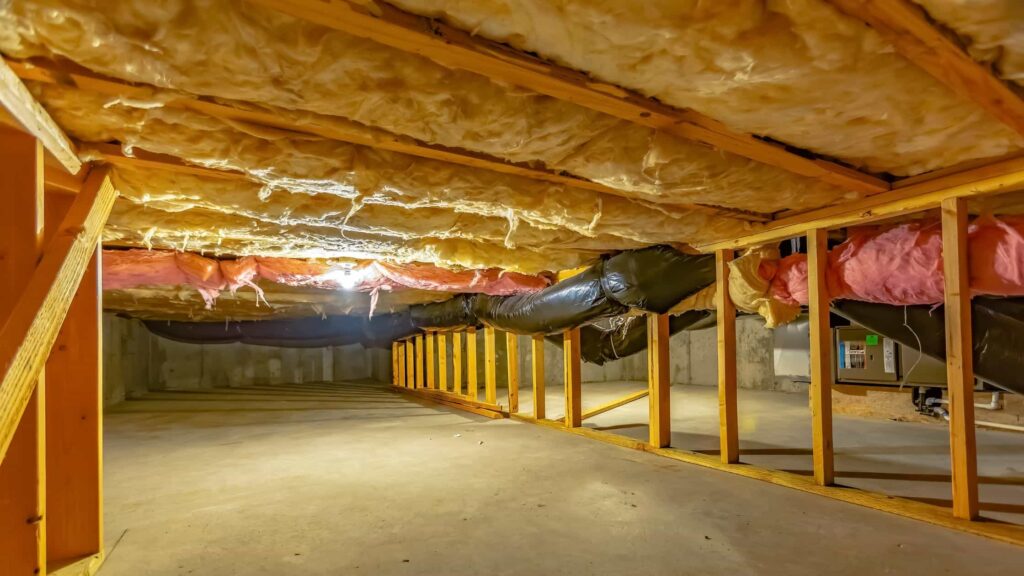Essential Crawl Space Maintenance: Stop Rodents Before They Start
Your crawl space is one of the most overlooked areas in pest prevention, yet it’s a prime entry point for rodents and other pests. A well-maintained crawl space can protect your home from pests like mice and rats while also preventing costly damage to your electrical wiring, wood, and insulation. Here’s what you need to do to ensure your crawl space is secure and your home is protected.
Why Crawl Space Maintenance Matters
Rodents, particularly mice and rats, thrive in dark, damp spaces. Your crawl space is the perfect environment for them. Without regular maintenance, pests can find potential entry points and sneak into your home, causing serious issues. From rodent infestations to mold growth, the problems caused by pests in your crawl space can be long-lasting and costly.
A neglected crawl space can lead to structural damage over time. Rodents often chew on electrical wiring, insulation, and pipes, which can result in expensive repairs. In addition to the risk of fire from chewed wires, rodents can introduce health risks by contaminating your indoor air quality. Proper crawl space maintenance helps to prevent these problems by stopping pests before they have a chance to gain access.
Steps to Prevent Rodent Entry in Your Crawl Space
- Seal Entry Points
- Rodents can enter your home through surprisingly small gaps. It’s essential to inspect your crawl space for cracks or other openings that may be letting pests in. Rodent entry points may be in foundation cracks, around vents, or even through garage doors and door sweeps. Use durable materials like steel wool and caulk to seal any cracks. For larger holes, consider using steel mesh or cement. Pay close attention to potential entry points around pipes, vents, and ducts where mice and rats can easily enter your home.
- Control Moisture with Vapor Barriers
- Excess moisture is one of the most common problems in crawl spaces and can attract rodents. Rodents prefer moist environments, so it’s crucial to install vapor barriers to block moisture from rising into the space. You can also use a sump pump to help manage any excess water if your crawl space is prone to flooding. By controlling moisture, you not only reduce the risk of pest infestations but also prevent mold growth and wood rot, which can damage your home.
- Proper Ventilation
- Without proper ventilation, your crawl space can become a breeding ground for mold and pests. If your crawl space is too humid, it can attract rodents and insects, leading to infestations. Ensure that your crawl space is properly ventilated to keep the air circulating and dry. Inadequate ventilation can also increase the likelihood of moisture buildup, which will further attract pests and cause long-term damage to your home’s foundation.
- Regular Inspections
- Perform routine inspections of your crawl space to check for signs of pest activity. Look for droppings, gnaw marks, nests, or signs of mold. Inspecting the space regularly helps you catch problems early before they escalate into full-blown rodent infestations. Inspections should focus on areas like door sweeps, vents, pipes, and garage doors, where pests often gain access to the crawl space.
Long-Term Pest Prevention Tips
In addition to regular crawl space maintenance, here are some additional tips for long-term pest prevention:
- Air Sealing:
- Make sure to air seal any cracks or gaps around your crawl space, including those near your doors and windows. Small gaps are common entry points for rodents and pests. A tight seal is essential to prevent pests from gaining access to your home. You can use caulk or weather stripping for a better seal around doors, windows, and vents.
- Improved Drainage System:
- A drainage system helps prevent water from accumulating around your home’s foundation. If water pools near your crawl space, it can attract rodents and insects, so make sure your drainage system is working properly. Installing gutters and downspouts that direct water away from your foundation is an effective way to prevent water damage and pest problems.
- Fix Leaks:
- Water leaks in your crawl space create the perfect environment for pests to thrive. Be sure to repair any leaks in plumbing, pipes, or the foundation to prevent water from pooling in the area. This can help eliminate moisture and make your crawl space less inviting to rodents. Leaking pipes can also lead to water damage, mold growth, and wood rot, further damaging the structure of your home.
- Install Pest Barriers:
- For an added layer of protection, consider installing pest barriers along your foundation or around the entry points to your crawl space. These barriers can deter rodents and insects from entering your home and help ensure long-term pest prevention.
Conclusion
Maintaining your crawl space is crucial for protecting your home from pests like rodents, insects, and moisture-related damage. By sealing rodent entry points, installing vapor barriers, managing moisture, and improving ventilation, you’ll significantly reduce the likelihood of a rodent infestation or other pest problems. Regular inspections and proactive pest prevention tips, such as fixing leaks, improving drainage, and using steel wool to seal cracks, will help you keep pests out and your home safe.
With the right care, your crawl space will remain a secure, pest-free environment that supports the health and integrity of your home. Don’t wait for pests to take over—take action now to secure your home and keep rodents from entering your home.
📞 Need professional crawl space maintenance? Contact us today for expert help and proactive solutions to protect your home!

